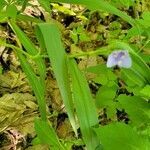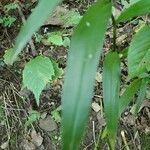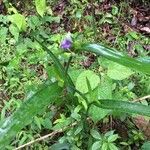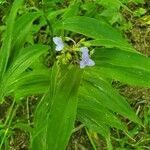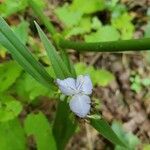Stem rather stout, 4–10 dm, with 4–10 nodes, glabrous or sparsely pilose; lf-blades firm, dark green, lanceolate, glabrous or sparsely pilose, ciliate-margined, the larger 10–20 × 2–4 cm, tapering to a petiole-like part much narrower than the sheath; cymes terminal and usually also lateral from the upper nodes, sessile or short-peduncled; pedicels 1–2 cm, thinly hairy or glabrate; sep 5–10 mm, thinly to densely hairy with glandular or eglandular hairs or both; pet 10–15 mm; 2n=12, 24. Rich moist woods. Var. subaspera, with the stem conspicuously flexuous above, and with the uppermost lateral cymes sessile or nearly so, occurs chiefly w. of the mts., from W.Va. to Tenn., w. to Ill. and Mo. (T. pilosa) Var. montana (Shuttlew.) E. S. Anderson & Woodson, with the stem straight or nearly so, the uppermost lateral cymes pedunculate, occurs chiefly in the mts., from Va. to W.Va. to Ala. and Fla.
